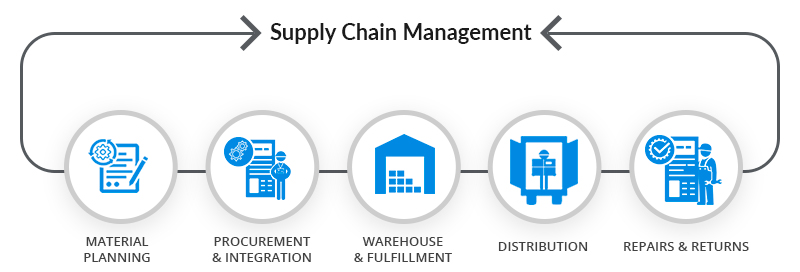
Supply Chain Management

Supply Chain Management
Supply chain management (SCM) is the process of managing a company’s supply chain, from sourcing raw materials to delivering finished products. The goal of SCM is to make the process more efficient and cost-effective.
- Planning: Forecasting demand, managing inventory, and arranging production.
- Sourcing: Identifying suppliers, negotiating contracts, and managing supplier relationships.
- Identifying 2nd Sources: It is critical to identify 2nd sources for your materials. This can be done using a risk based approach.
- Manufacturing: Accepting raw materials, designing and producing products, and handling quality control.
- Delivery: Transporting and distributing finished products to customers.
- Returns: Handling returns of defective, excess, or end-of-life products.
Supplier Management
Supplier management, also known as Supplier Relationship Management (SRM), is the strategic process of overseeing and nurturing relationships with external suppliers to optimize value, minimize risks, and ensure a smooth supply chain. Supplier management encompasses the activities involved in finding, selecting, onboarding, managing, and evaluating suppliers to ensure they meet an organization’s needs and contribute to its success
- Supplier Selection and Onboarding: Identifying potential suppliers, evaluating their capabilities, and establishing formal relationships.
- Supplier audits: Conducting Supplier Audits is essential for ensuring the quality, safety, and compliance of raw materials, equipment, and supplies, protecting patient safety and maintaining regulatory compliance. These audits assess a supplier’s facilities, quality management system, and processes to verify adherence to industry standards and regulatory requirements.
- Contract Management: Negotiating and managing contracts with suppliers, ensuring compliance with terms and conditions.
- Performance Monitoring and Evaluation: Regularly assessing supplier performance against agreed-upon KPIs (Key Performance Indicators) such as quality, delivery times, and cost.
- Risk Management: Identifying and mitigating potential risks associated with suppliers, such as supply disruptions or compliance issues.
- Supplier Development: Working with suppliers to improve their capabilities and performance.
- Supplier Communication: Maintaining open and effective communication with suppliers to build strong relationships.
Supply Chain Logistics
Logistics focuses on the planning, implementation, and control of the flow and storage of goods and services, including transportation, warehousing, inventory management, and order fulfillment. Logistics is about the efficient movement and storage of goods to meet customer needs.
- Transportation: Moving goods from one location to another.
- Mode of Transport: Choosing the most appropriate mode of transport (e.g., trucks, trains, ships, planes) based on factors like distance, urgency, and cost.
- Route Optimization: Finding the most efficient routes to minimize transportation costs and time.
- Logistics Providers: Selecting reliable and efficient logistics providers to manage transportation activities.
- Technology: Utilizing technologies like GPS tracking and route optimization software to improve efficiency and visibility.
- Warehousing: Storing goods in a secure and organized manner.
- Inventory Management: Maintaining the right amount of inventory to meet demand.
- Order Fulfillment: Processing and shipping customer orders.
- Reverse Logistics: Managing returns and recycling of products.

